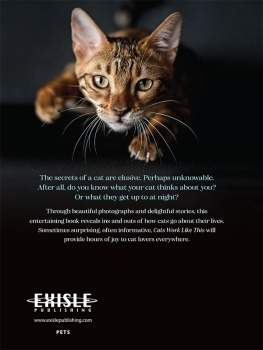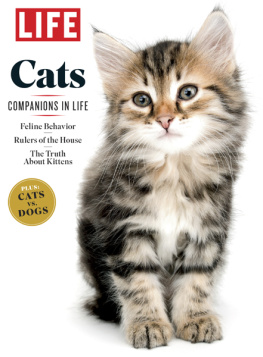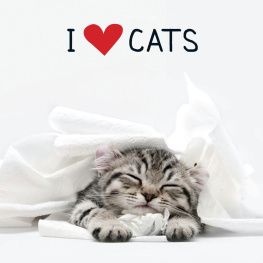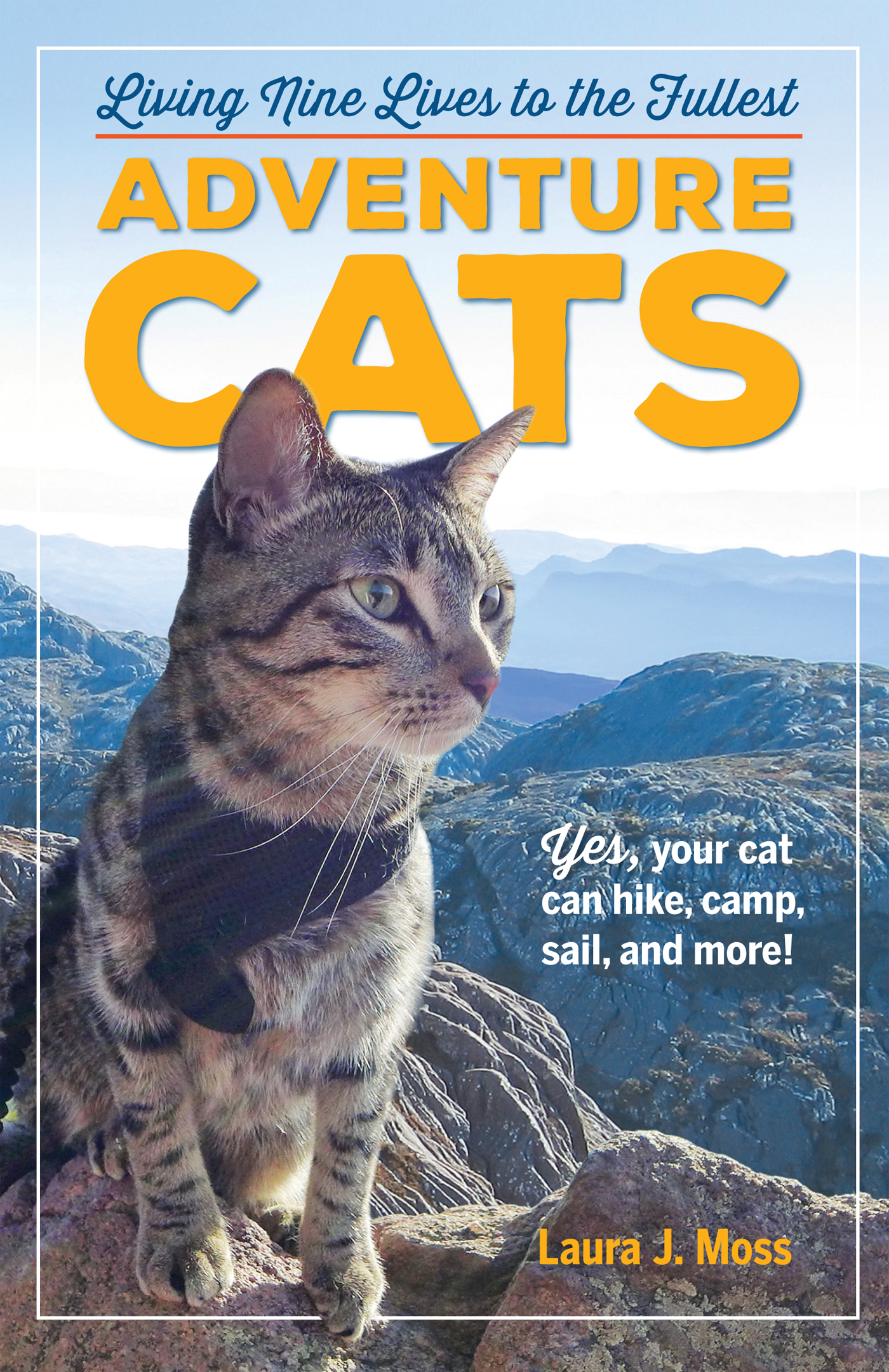
ADVENTURE
CATS
Living nine lives to the fullest
Laura J. Moss
Workman Publishing New York

This ones for all the adventurers on this beautiful planet and for everyone whos ever known the love of a cat.

Contents
The Adventure Cats storyWhy adventure with a cat?
Leashing training Clicker training Feline body language Air and car travel with cats
Feline first aid Packing tips Getting purrpared for an adventure
Exploring the yard Hitting the trail Ensuring a happy campurr
Introducing your cat to water Boating with paws on board
Braving the elements Safety tips for cold weather
Exploring the concrete jungle Getting creative: Catios and feline-friendly gardens
Adapting adventures for cats with special needs

Introduction
The Adventure Cats Story
T he first time I saw a cat on a leash was when I was volunteering for a cat rescue in college. On Saturday mornings, Id drive to a local pet store to help empty litter boxes, scrub crusty food dishes, and play with all the adoptable kittens that neither my mother nor my resident adviser would allow me to bring home. But one morning when I arrived to perform my regular duties, there was a note on one of the cages instructing me to take the orange tabby on a walk through the store. A tiny blue harness dangled beside the cage.
Take a cat for a walk? While Id seen plenty of leashed dogs wander through the aisles of the store, Id never once encountered a leashed cat. I didnt even know you could walk a cat. After all, cats seemed like the kind of animals that would be above that sort of thing. Being led around by a mere human? Leave that to the dogs.
But once the cages and dishes gleamed and the litter boxes were freshly refilled, I let the skinny cat out andmuch to my surpriseeasily snapped on the harness. Then we were off. The little ginger knew right where he wanted to go and didnt let curious onlookers or snarling schnauzers distract him from the journey at hand. He made his way straight to the aisles devoted to cat food and treats and set to work sniffing and exploring. Eventually, he climbed atop a cat tree.
How did you train him to walk on a leash? people asked me. Do they sell cat harnesses here? others inquired. I dont know, I replied again and again. A cat on a leash? It was new to me too.
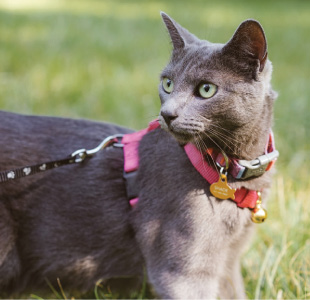
For most people, the sight of a cat on a leash is quite surprising.
The next Saturday, I was looking forward to taking that cat on another walk through the store, but when I arrived, a new feline had taken his place. The little leash-trained tabby had been adopted. Apparently, someone had seen him prowling through the aisles on his harness and filled out an adoption application that very day.
Despite the impression that cat made, I didnt attempt to leash train any of my own cats for another decade. It wasnt until I started hearing about courageous kitties like that I started to wonder about the possibilities of adventuring with a cat. And it wasnt until one of my own catsonce so content to watch the outside world from the windowsuddenly darted out the door that I actually purchased a couple of cat harnesses.
I leash trained both of my cats and slowly introduced them to the world beyond the windows. And as they became more comfortable exploring the wilds of the backyard, my husband and I, who are both active hikers, started to wonder if our kitty companions might one day safely join us on a trail. So I did what anyone looking for information would do: I Googled it. I found plenty of articles and blog posts about leash training cats, but none of them explained how exactly a cat could go from exploring the backyard to hiking and camping alongside its owners. So in March 2015, when I told my husband how the Internet had failed to provide me with the one-stop resource my outdoorsy, cat-loving heart desired, he said, You could make that. With that statement, AdventureCats.org began to take shape in my mind, but what started out as an idea for a simple online resource for fellow adventure cat enthusiasts soon evolved into much more.
You see, Id recently pitched a story to my editor about stereotypical cat people. I expected the article to be an entertaining look at how modern women defy the absurd and surely obsolete stereotypes associated with owning cats, but the story took an unexpected turn when my research revealed that people really do buy into the crazy cat lady persona. In fact, 49 percent of Americans believe its an accurate stereotype, according to a 2015 PetSmart Charities survey. And when asked which qualities they associated with cats, a majority of people assigned such words as moody, stubborn, and aloof.
As I did more research, I talked to women who said they wouldnt adopt another cat for fear theyd be labeled a crazy cat lady. I came across men who said theyd been mocked for having cats, which are thought by most to be pets for women. I even read blog posts written by women explaining that a single man with a cat is a red flag, as well as confessions penned by men defending their love of cats, as if there were something inherently emasculating about providing a loving home for a feline.
Are these negative perceptions about cats and their owners actually hurting adoption rates? I wondered. I talked to shelter workers who said they believed so, but perhaps the numbers best speak for themselves: According to that same PetSmart Charities survey, 19 percent of respondents said there simply arent as many adoptable cats in shelters as there are dogs, but in reality, more cats1.4 million annually, according to the American Society for the Prevention of Cruelty to Animals (ASPCA)are euthanized in U.S. shelters than dogs. And a 2014 U.S. Shelter Pet Report found that 27 percent of people considering a new pet said they wouldnt adopt a cat. Apparently, our perceptions of cats and the people who love them really can play a role in shelter adoptions.
So it was in researching a story completely unrelated to AdventureCats.org that I found the most pressing reason to build the site. Yes, I wanted to create an informational resource, but even more than that, I wanted to change peoples minds about what it means to be a cat person. I wanted them to see that while cats can make excellent company for single women, they can also make pawsome outdoor companions for men and women alike. After all, if theres one lesson that little orange tabby at the shelter taught me, its this: A cat that defies stereotypes is a cat people want to talk about and a cat that finds a home. By challenging ideas of what cats and the people who love them are like, I hope that more people will be inspired to take home one of those millions of homeless kittiesand maybe even take them on an adventure.
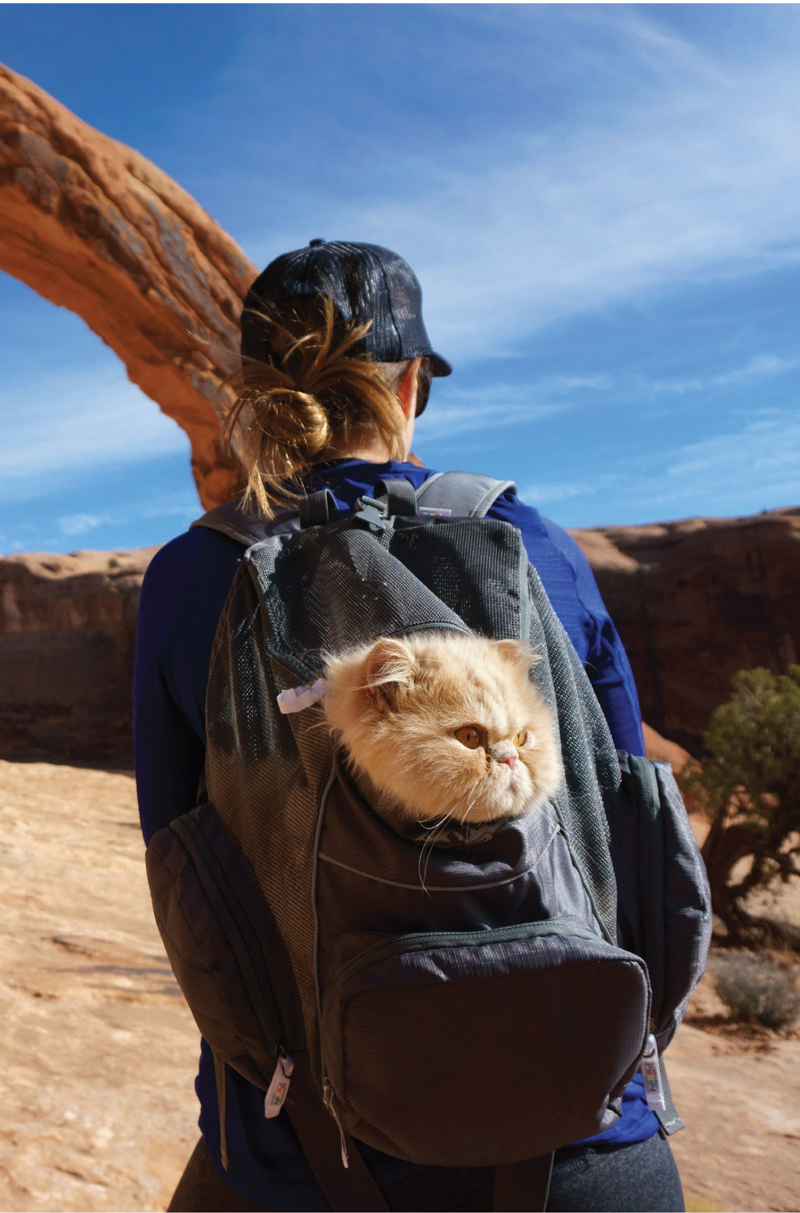
Brave felines like Floyd prove that not all cats are content to spend their lives indoors, especially when their owner has a cozy backpack.
Next page







